Webinar Architect Course > Module 01: Creating Your Offer
LESSON DETAILS
[accessally_icon post_id="3550"]
[progressally_progress_text post_id="3550"]
LESSON PROGRESS:
COURSE PROGRESS:
LESSON OVERVIEW
Video 02: Why Is It Valuable?
- What pain points does it solve? Even if you feel you know exactly what the pain points are and what you can help with, do research. Go on YouTube and search for several keyword phrases around “How to…” do something in your niche. Depending on your niche, you might also be able to use Amazon for research. Just find the products for your niche and read the comments, questions, and reviews to discover what people like and dislike.
- Why is it valuable? When you ask yourself this question it helps you to get clear on the value your product has, making it easier to convey in your messaging, PowerPoint, and any sales copy.
- Does it pay for itself (time/money)? How does it help your customer save time and/or money, if at all? When you can demonstrate your product will allow customers to “buy money at a discount” it’s the easiest sell you’ll ever make. By this I mean, if it’s money they’re going to spend anyway and you can show them how your product will reduce the total amount spent over time by spending a little bit more now, it’s a no-braining (think buying in bulk). If it just helps save time and not money, you simply need to remind them that time is more valuable than money. Because I always create products for other entrepreneurs and business owners, I like to use the saying, “Poor-minded people are always willing to spend their time to save money. Successful people are always willing to spend their money to save time.”
- Does it give peace of mind? Does your product offer peace of mind, meaning it’s something they might have to worry about in their life, but your product helps them not to worry about it (think insurance, home security systems, etc.).
- Does it help customers profit or otherwise benefit? Can your customers make money with your product? Good. This is an easy sell. If not, clearly define ALL the ways your customers will benefit from your product.
- How does it take your prospect from point "A" to "E+"? You don’t need to have it ALL figured out yourself to sell a valuable product. Remember this saying: “In the land of the blind, the one-eyed man is king.” Don’t try to solve ALL of your customer’s problems. Instead, focus on helping them go from where they are to a more desirable state. Don’t focus on getting them from “A” to “Z” but rather from “A” to at least “E” meaning you’re helping them skip a few steps. From “A” to “B” isn’t enough though because they can figure that out on their own.
LESSON DOWNLOADS
DOWNLOAD TRANSCRIPT
"Right-Click" the button below and select "Save link as..." to download this lesson's transcript in PDF format.
DOWNLOAD AUDIO
"Right-Click" the button below and select "Save link as..." to download this lesson's audio file in MP3 format.
LESSON TRANSCRIPT
Matt: (00:01)
In this video we're going to talk about continue with creating your product, discussing specifically what pain points do it solve, what pain points does itself, and why is it valuable? So you might think you know exactly the pain points because you're your best customer, right? You're creating a product because it was something that you wanted to understand and you research or have experienced personally. So you think you know all the pain points, but it's a really great idea and great practice to do some research. And the best place I've found to do this is on YouTube. So I'm gonna give you an example of that right now. So I'm on a video where I searched how to create a webinar and I searched multiple keywords around this keyword phrases, how to create a selling webinar, how to create a webinar prejudice presentation, how to set up a women or all kinds of different videos.
Matt: (00:49)
And I wanted to just look in the comments of these videos because they will tell you exactly what they're struggling with. So case in point, the very top comment here, the guy said he's been on a bunch of webinars and he's come to know what to expect, but you breaking it down like this helped me make much more sense of it and I've kind of been intimidated by the idea of doing a webinar presentation myself. But your framework for structuring the content makes it seem a lot, a lot less daunting. That's great. Great information. So okay right here, this guy says, okay, thanks. How do I actually make a webinar? So in two of the comments on this one, video one was around, I don't really know what to do for the presentation. How do I even structure the presentation? And this guy says, I don't even know how to actually make a webinar.
Matt: (01:35)
So the actual how to the technical stuff, those were two of the takeaways that I took for what people were looking for. And so, okay, these are the five main takeaways that I took. Just doing some research and I, I pretty much had a good idea of this, but it, but it helped me focus my content so they knew exactly what to address in the training and also in the product itself. So I don't know what to offer that would be enough value. So, you know, obviously the, the imposter syndrome, it's like I don't, you know, I feel like I need to know everything before I could possibly give any value to anybody. And again, remember in the land of the blind, the one-eyed man is King, right? So you don't have to know everything. You just need to know more than people that you can teach, right?
Matt: (02:22)
So learn yourself and teach to others. So that was a good one. So what, like feeling valuable and feeling like the, the course itself has a lot of value. I've talked to a lot of people about their businesses and the offers and they're charging so little for their time and for their expertise. They just don't feel like they have enough value or they have fear around money and that, that people aren't going to be willing to buy their product with that particular price. So the next one was, I don't know, the technical stuff, like how do I even set up a webinar? I don't know how to get people to my webinars. So how do I market my webinar once I create it? I don't know how to structure my presentation and I don't know what price point I should sell my product.
Matt: (03:04)
So focusing on these were great reminders of, right from the words that people said in those videos. So whatever your product is about, go on YouTube and search for those things many different ways and just read the comments. Okay? Now let's talk about you know, why is it valuable? Let's talk about value. So when figuring out how to make your product super valuable, just ask yourself, you know, does it pay for itself? Okay? Does it actually save someone money on something that they're already going to be spending money on? Does it allow them to make money? Right? By investing in money now they will learn something that's going to help them make even more money. Does it give peace of mind? Like like a security system, a home security system or insurance for your car or health insurance, right? It's not inherently valuable itself, but it will give you peace of mind that should anything happen. You're covered. Okay. So peace of mind.
Matt: (04:10)
And then if it doesn't help them make money, how else does it help them benefit? Okay. List out all the possible benefits and even if they're ridiculous, I like when I'm brainstorming is to dump out all the ideas I possibly have and then whittle it down to the core concepts or the most valuable stuff. And again, we don't want to focus on taking people from A to Z. You don't need to know everything yourself. Okay? And you also can't take them from a to B because that's not enough, right? People can figure things out on themselves. So what we want to focus on is skip a few steps and help them get from here to at least E, right? We can skip B, C, and D and get them to E with your information. People will pay for anything from here onwards. If you can help them skip several steps, save a lot of time then you have something that's valuable. And if you can combine all of these, you know, the more of these things that you have, the more value, the more perceived value your product will have.


